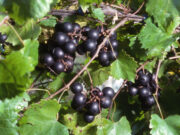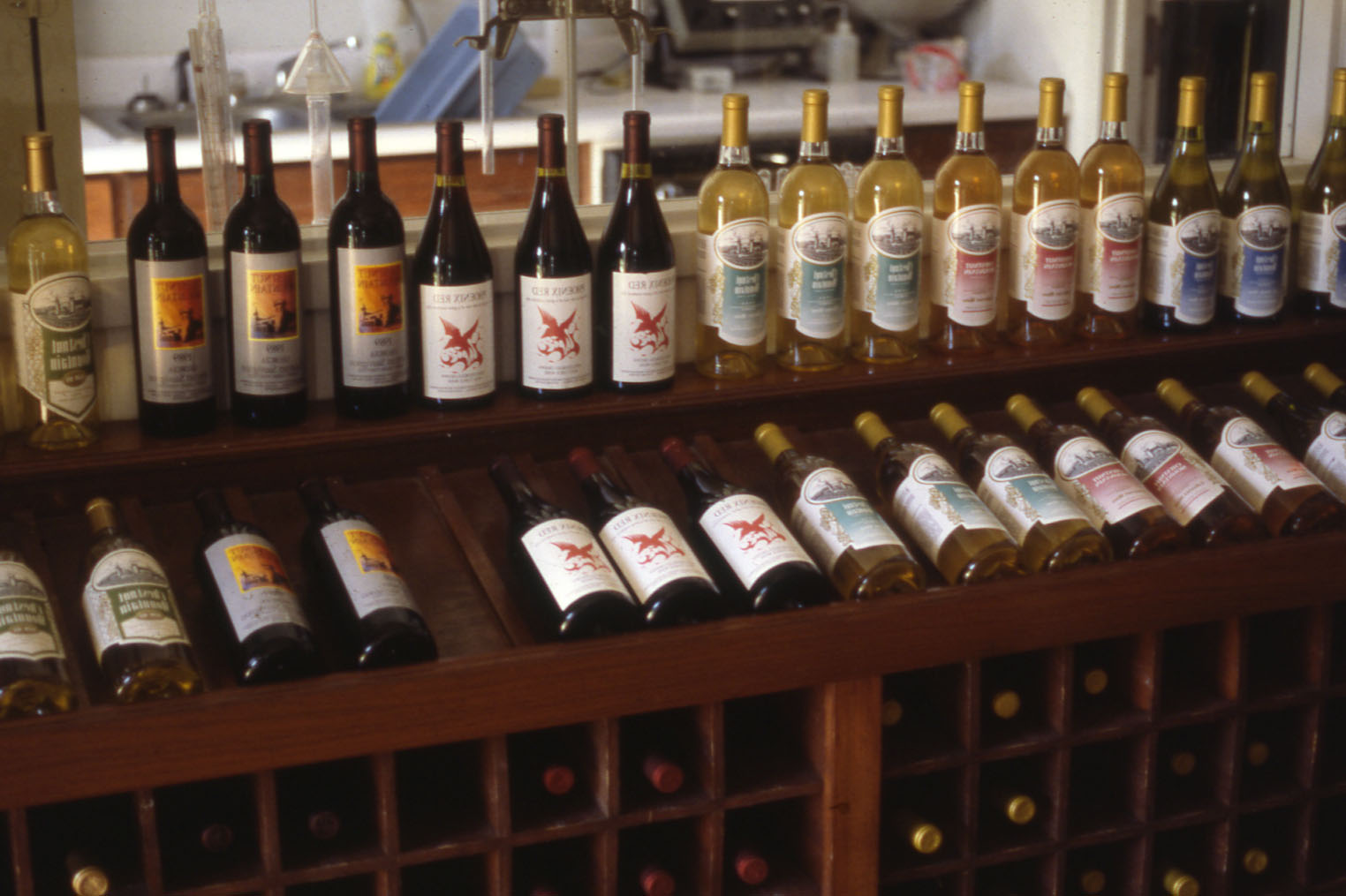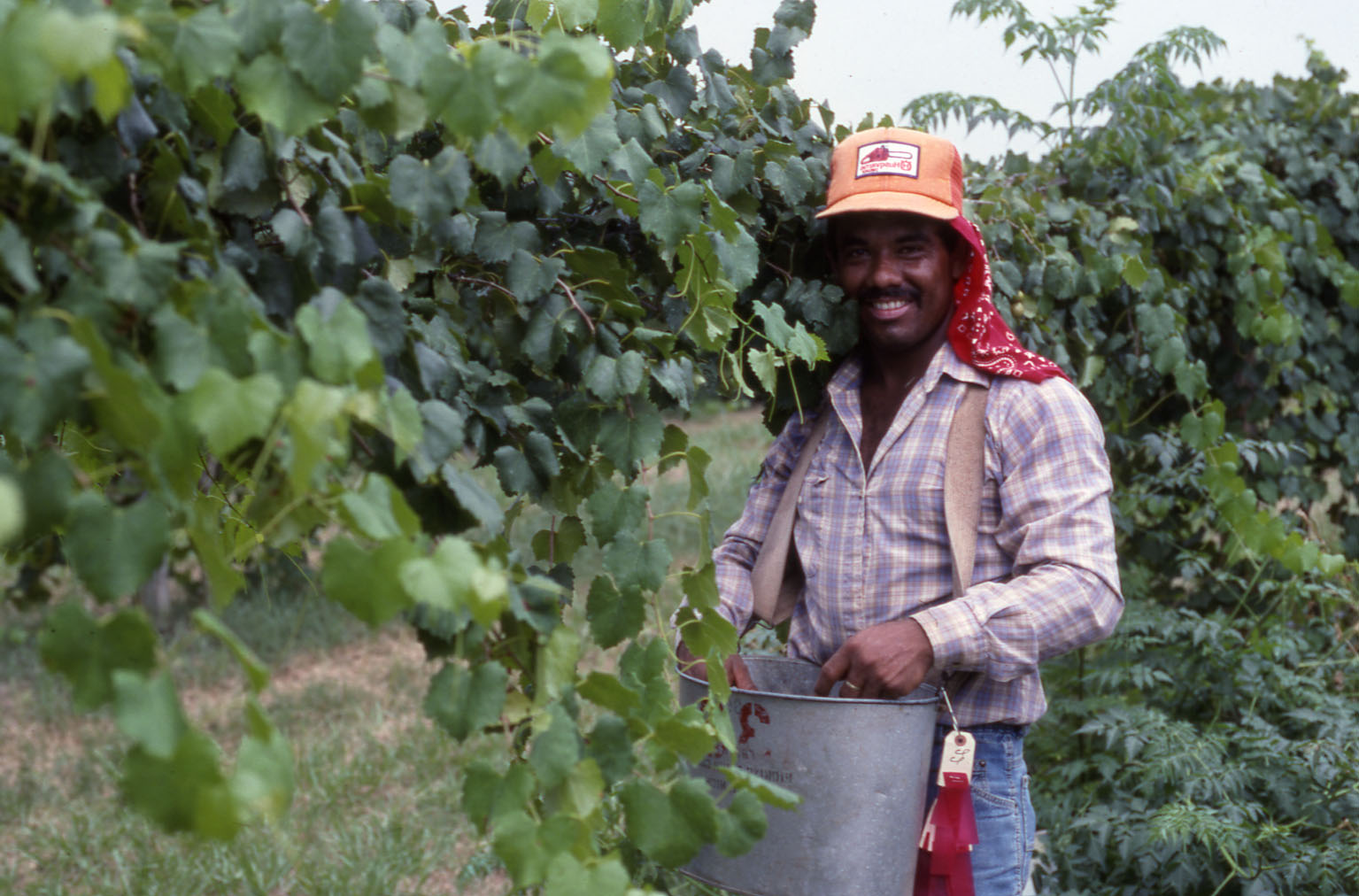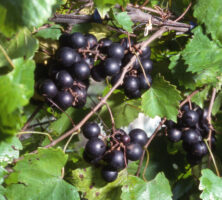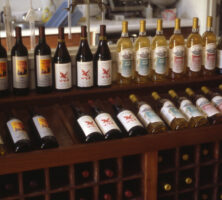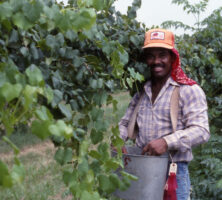Georgia has a long tradition of grape growing and wine making based on the native muscadine grape (Vitis rotundifolia). In recent decades, with the advent of modern fungicides, the European bunch grape (Vitis vinifera) and French-American hybrids (European bunch grape crossed with American bunch grape) are being grown successfully in the mountain areas of Georgia. Georgia leads the nation in the production of muscadine table grapes that have been developed primarily by breeders at the University of Georgia.
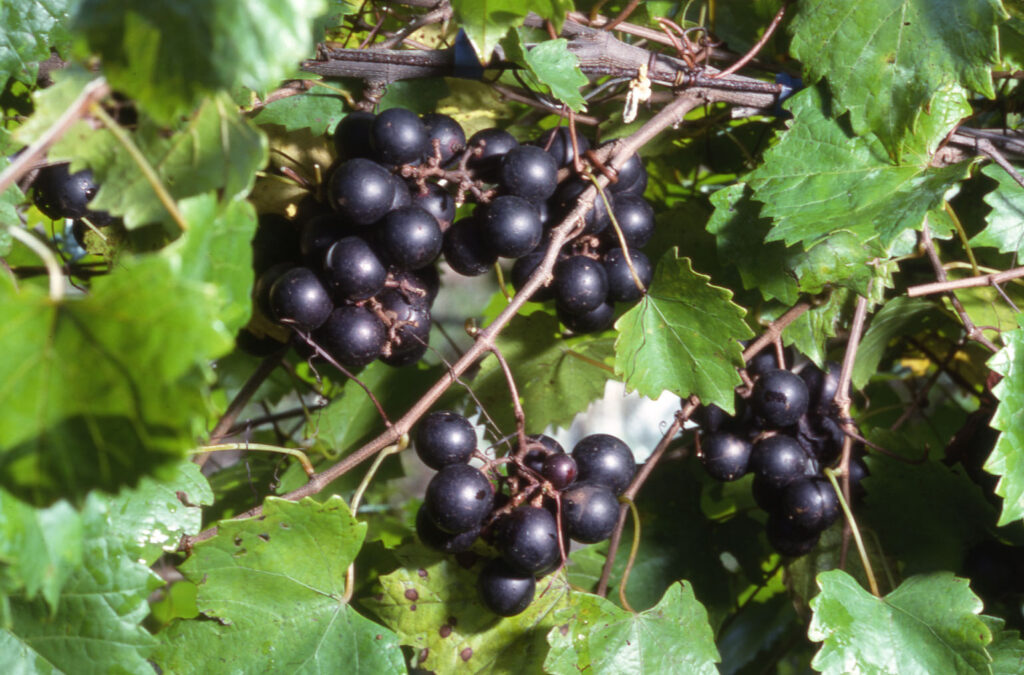
Courtesy of Gerard Krewer
Georgia’s four distinct climate zones have a huge influence on grape production. In the Tennessee Valley, north of the Blue Ridge Mountains (U.S. Department of Agriculture Zone 6b), such French-American hybrids as Chambourcin and Seyval Blanc are best adapted. In this area there are two wineries, Crane Creek in Young Harris and Tiger Mountain in Tiger. On the south slope of the Blue Ridge Mountains and in the Valley and Ridge district (USDA Zone 7a) French-American hybrids and European bunch grapes thrive. In this region there are five wineries: Habersham in Helen; Three Sisters, Wolf Mountain, and Frogtown Cellars in Dahlonega; and Georgia Wines in Chickamauga. Some of the primary cultivars (cultivated varieties) being grown are Chardonnay, Merlot, and Cabernet Sauvignon. In the Piedmont district (USDA Zone 7b), muscadines and selected cultivars of bunch grapes thrive. In this area there are three wineries: Cha

Courtesy of Gerard Krewer
The primary factor limiting the production of bunch grapes in Georgia is Pierce’s disease (PD), a bacterial disease spread by leafhoppers. PD is severe in south Georgia and the lower Piedmont. In the upper Piedmont the disease is less severe, and in the mountains above 1,600 feet it is usually only a minor problem. In the PD area muscadines and selected cultivars of PD-resistant bunch grapes developed in Florida and Mississippi can be grown.
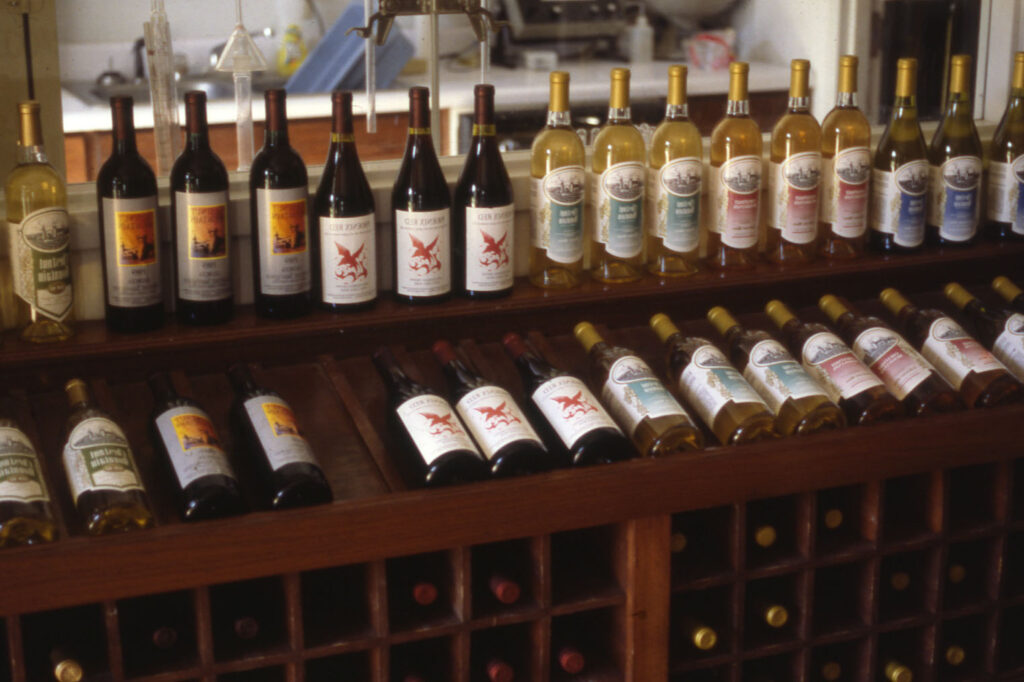
Courtesy of Gerard Krewer
The University of Georgia has had a muscadine-breeding program since the 1920s. The release of a series of high-quality, large-fruited cultivars has led to the development of a muscadine table-grape industry with about sixty growers and 1,000 acres. Some of the most important cultivars are Fry and Summit, bronze-fruited, female-flowered types, and Granny Val, a bronze-fruited, self-fertile type. Fruit is sold in many southeastern grocery chains and locally in August, September, and early October. Fresh market sales are about 6 million pounds annually with a farm gate value (the value of the produce when it leaves the farm) of about $3 million. Muscadine grapes are also a very popular home-garden fruit in Georgia.

Courtesy of Gerard Krewer
The wine industry has about twenty growers and about 400 acres, with a retail sales estimate of about $10 million annually. Several companies, such as Still Pond, Callaway Gardens in Pine Mountain, and Paulk Vineyards in Wray, produce muscadine beverages, food, or nutritional products. Muscadine grapes are a rich source of dietary fiber and ellagic acid, an anticancer compound. Growth in both muscadine production and the wine industry is expected.


